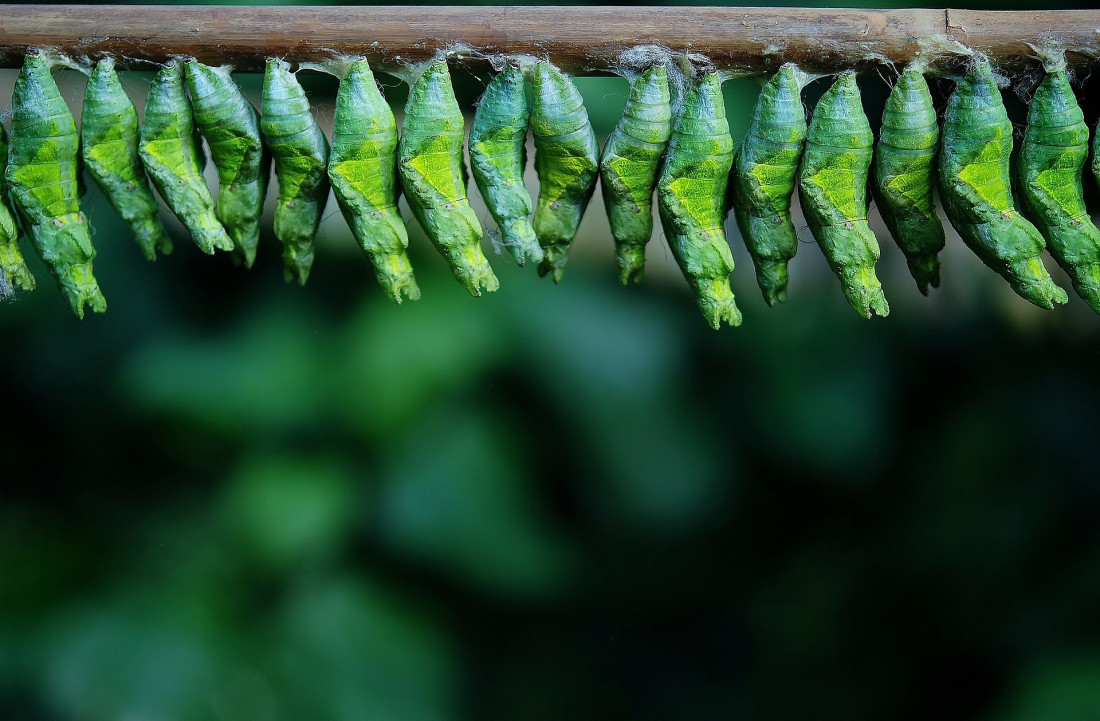A lot has been written, in recent years, about the benefits of insect protein as an animal feed additive. Numerous studies have weighed up the pros and cons of insect meal, but with the industry expanding at a significant rate, it is clear that there are benefits to using insects as an additive to fish, poultry, and ruminant feed.
Perhaps most obviously, is the how simple the proces is to make protein additives for animal feed from insects. As the industry journal, TheFoodRush, describes, “When the flies have laid their eggs, the trays are transferred to a different container. There they will develop into maggots that eventually reach the end of the larval life cycle. At this moment, they will be put into a heater or dehydrator device to dry them out. Once dry, they can be ground into a flour-like substance that can be added to the meal used to feed livestock, poultry, or fish.”
The next biggest reason for using insect protein as a feed ingredient is demand. As the EU Commission’s CORDIS (Community Research and Development Information Service) states, “Europe currently imports 70 % of its protein for animal feed, putting it at risk from ever-growing competition for feed protein from a global population that is set to exceed 9 billion by 2050. Developing nations in particular are seeing a huge increase in demand for animal products, and there has been a five-fold increase in the total consumption of meat since the mid-1940s.”
However, there are plenty of challenges facing any new industry, and that includes the development of large scale insect protein production.
One of the largest problems facing Insect-For-Feed producers is legislation.
The industry is expanding, there is an evident need for a more sustainable protein feedstock, and yet the law is struggling to keep up with the pace of progress.
As Sarah Nolet, a consultant on food system innovation explains in a recent article on the agribusiness investor website, AGFunder, “Most countries lack a regulatory framework equipped to handle the potential risks (e.g., concerns over mad cow disease in Australia), while still allowing for innovations to enter the market. China is a clear exception, as they have an established regulatory framework, which is why companies like Protix have gone there to scale up production and establish traction.”
But now it seems that the tide has turned, and lawmakers are seeing the logic of environmentally friendly, sustainable, and circular economy insect farming for animal feed. As a report by the scientific journal, LabManager, states, “Until recently, insect-based feed was not allowed in the farmed fish industry in Europe. After years of discussions with European Union officials the EU Standing Committee on Plants, Animals, Food and Feed voted in December 2016 to allow insect proteins to be used in fish feed in Europe starting July 2017. [Although] only protein from eight insect species, including that from mealworms and two species of flies, are permitted.”
But there are still hurdles to be passed, even for using insect meal in petfood, as the industry journal, PetFoodIndustry.com, makes clear, “At the Association of American Feed Control Officials (AAFCO) meeting in January, the Committee indicated that new definitions for each insect, type of ingredient (flour, meal, protein concentrate, etc.) and intended species would need to be established first for the insect ingredients to be considered acceptable.” Adding that, “To date, only one insect, black soldier fly larvae (AAFCO #T60.117) has been defined, and that is limited to use in salmonid feeds.”
Pressure is growing though to pass legislation to further free up the use of insects as an animal feed raw material. This process has already begun in the EU, where, according to the journal FarmingUK, “The European Commission officially authorised insect-based processed animal proteins (PAPs) as feed for aquaculture animals on May 24, 2017, through a change to Annex IV of Regulation 999/2001, with the regulation text to come into effect on July 1 this year.”
However, many animal feed suppliers do not think that the legislation goes far enough, and are pressing, “… to allow ‘safe and sustainable’ insect-based feedstock for the pork and poultry industries.”
One such supplier is Mohamed Gastli, co-founder and CEO of insect farmer nextProtein, who believes that, “What must now be a priority is ensuring outdated regulations are amended to ensure safe and sustainable insect proteins can be used in the poultry and pork industries.
“Insect proteins are one of the most abundant sources of alternative proteins but until now the legal framework covering insect proteins needs has yet to fully catch up to the future of what businesses like ours can offer to modern agriculture.”
There has been significant media coverage on the need for a circular economy. The global and political will to combat climate change is present, and the need to increase global food production is well known, and yet many legislative bodies are reluctant, or simply too slow, to pass legislation allowing the increased use of insect meal as an animal feed source.
Already, two billion humans regularly consume insects as part of the diet, and yet we are concerned about the impact it will have on cattle and swine. Or even poultry, which have a natural urge to scratch and hunt for farmyard bugs.
If it is public opinion that is slowing down progress, then maybe we need to have an open debate about the advantages of insects as a protein source. For while it may seem unnatural to feed cows meal worms, growing acres and acres of corn and soybean for cattle feed isn’t very natural either.

